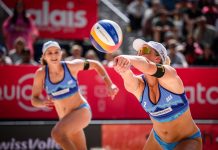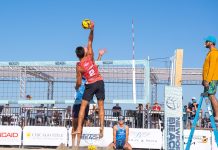It’s a sad day for sailboat racing everywhere.
While it is not uncommon to hear about loss of life in the famous Sydney to Hobart sailboat race, it’s very uncommon to find out we locally have even one loss of life in a local sailboat race.
Until this last year I cannot ever recall a loss of life during a sailboat race except for medical reasons (heart attack, etc).
And so, it is with deep regret, consternation and some disgust that I write the following column.
We’ve had another loss of life during the Islands race. This makes four during the last Ensenada race if I recall, one at the Northern California Farallon Islands race and the one two weekends ago. All of these losses were preventable.
It’s very disturbing to have to admit that the captains of these vessels were derelict and caused at least five of the last six cases. The most recent could be a boat builder’s fault which pains me to report as I know the builder, have a lot of respect for his father and raced a 30-foot Schock Santana 30/30 with his brother.
For the last couple of years I’ve witnessed a secret in the new boat industry which has compromised the safety of hundreds, if not thousands, of large and small yacht owners and their guests.
I became aware of the situation during a visit to the Schock sailboat manufacturing factory in Corona. At that time, around 2005, I was racing with Mike Lombardi and mentioned the Schock family were family friends and I had always looked up to Tom as he is one of the few very elite winning sailboat skippers from Newport Harbor for the last 50 or more years. Tom is the best of the best.
Following mentioning this, Mike asked if we could tour the factory. I called Tom and he was gracious enough to personally give us a tour and answered Mike’s questions at lunch. I don’t recall if it was Mike or myself who asked Tom why he wasn’t joining other builders by building light weight fiberglass boats via the vacuum bag resin infused method. Since it’s conception, yachts all over the world use these methods to make sailboats quicker and power boats faster with less horsepower which also minimizes the fuel quantity and expense.
Tom said he would not use this method. He said there was no known way for him to guarantee the proper thickness of resin throughout the yachts, especially the hull. He would not risk the safety of his yacht buyers or even himself. He stated until the vessel integrity could be verified, they would continue to build the heavier vessels which he knew were built to the engineering standards specified by Steve, his brother, who designs their sailboats.
In my earlier columns I’ve mentioned that I have been instructing boating to the son and daughter of one of my clients. I immediately mentioned to them from the beginning, and every time we’ve met, that the most important thing in boating is safety. The second most important thing in boating is to have a good time.
Now back to the present. About a year ago I saw the first Columbia 32-foot screaming down the bay in a light wind. Vince Valdez previously built the Columbia 30 and now the 32-foot using the vacuum infused resin method to save weight and create a fast boat.
One of our crew on Mike’s Santana 30/30 was Vince’s brother. His brother invited us in 2006 to the new Columbia factory for an open house in Santa Ana and I went with Mike. The Valdez family was in full force and Dick Valdez, the father, is a world famous yacht builder who started making boats in the late ‘50’s which included Columbias, Lancers, and the Mediterranean power boat sport fishers. Dick Valdez is one of few builders who built his companies into large production companies and then sold them at their peak usually just before a huge recession. He would then start a new company with new styles and then follow the previous methods. Many boat builders followed their dreams and sooner or later “lost their shorts.” Dick isn’t a member of that club.
The press stated the Columbia 32 with the terrible tragedy lost their rudder, their anchor didn’t hold and the towing company most of us rely upon in emergencies refused to leave our harbor due to small craft warnings. Shame on them! If we can’t rely on them when there’s a little weather they’re useless! It was a small craft warning; not a hurricane.
Remember, safety is the most important thing when boating inshore, offshore and everywhere in between.
As I have more information and comments I feel are appropriate, I will continue this next week.
Sea Ya,
Skipper Steve




